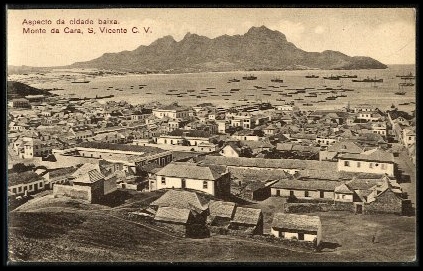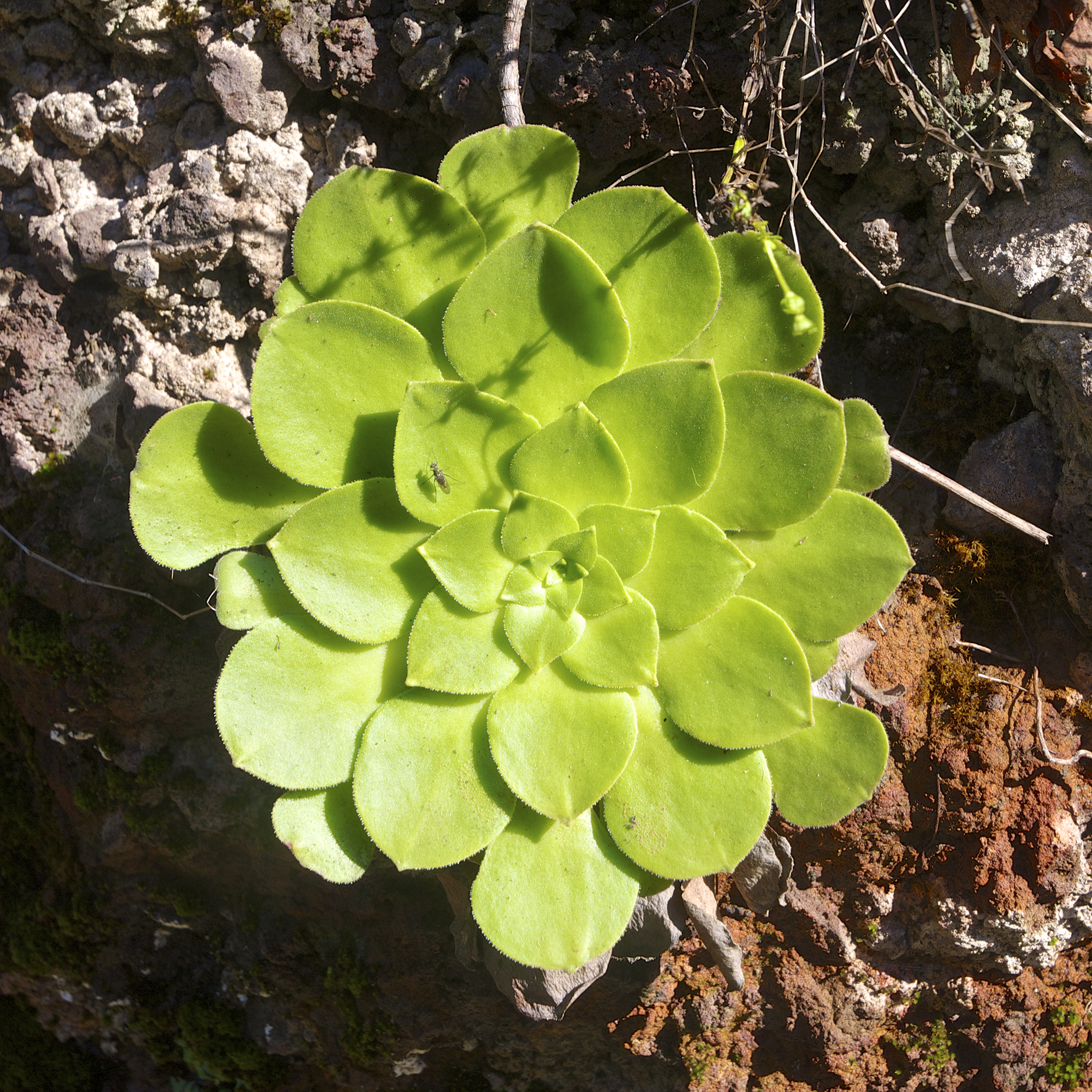|
Aeonium Gorgoneum
''Aeonium gorgoneum'' is a species of flowering plant in the family Crassulaceae. The species is endemic to Cape Verde. It was first described by Johann Anton Schmidt in 1852. Its local name is ''saiĂŁo''. The plant plays a role in traditional medicine for the treatment of coughs. Description The plant is a perennial shrub and grows up to about tall. Its chromosome number is 2n=36. Tropicos, Missouri Botanical Garden, St. Louis Distribution and ecology ''Aeonium gorgoneum'' is found on the islands of Santo AntĂŁo, SĂŁo Vicente and[...More Info...] [...Related Items...] OR: [Wikipedia] [Google] [Baidu] |
University Of California Botanical Garden
The University of California Botanical Garden is a 34-acre (13.7 ha) botanical garden located on the University of California, Berkeley campus, in Strawberry Canyon. The garden is in the Berkeley Hills, inside the city boundary of Oakland, California, Oakland, with views overlooking the San Francisco Bay. It is one of the most diverse plant collections in the United States, and famous for its large number of rare and endangered species. Description The garden was established in 1890 on the university's central campus. It was moved to its present location in the Berkeley Hills above the main campus under the directorship of Thomas Harper Goodspeed. The garden is about a mile from the Lawrence Hall of Science. The layout in Strawberry Canyon was designed by Goodspeed and fellow Berkeley professor and landscape architecture, landscape architect, John William Gregg. Collections The garden has more than 20,000 accessions, representing 324 plant families, 12,000 different species ... [...More Info...] [...Related Items...] OR: [Wikipedia] [Google] [Baidu] |
Johann Anton Schmidt
Johann Anton Schmidt (6 May 1823-21 January 1905) was a German botanist. Schmidt was born in Hamburg to a merchant family. Under the request of their family, he became a gardener and studied botany in 1843 at the University of Heidelberg (with Gottlieb Wilhelm Bischoff) and in 1849 at the University of Göttingen (with August Grisebach and Friedrich Gottlieb Bartling), in 1850, he was promoted with a dissertation of the causes of the plant to spread, in 1851, he went to a collecting trip in the Cape Verdean Islands and studied its habilitation in Heidelberg on the local flora of Cape Verde. In 1852, he became private lecturer of Heidelberg and studied the local flora. He also provided for example, mint and figworts for ''Flora Brasiliensis'' by Carl Friedrich Philipp von Martius. In 1852 he became a member of the Leopoldine order. After the death of Gottlieb Wilhelm Bischoff, he temporarily headed the botanical garden. He hoped to have a full appointment succeeding Bischo ... [...More Info...] [...Related Items...] OR: [Wikipedia] [Google] [Baidu] |
Flowering Plant
Flowering plants are plants that bear flowers and fruits, and form the clade Angiospermae (), commonly called angiosperms. The term "angiosperm" is derived from the Greek words ('container, vessel') and ('seed'), and refers to those plants that produce their seeds enclosed within a fruit. They are by far the most diverse group of land plants with 64 orders, 416 families, approximately 13,000 known genera and 300,000 known species. Angiosperms were formerly called Magnoliophyta (). Like gymnosperms, angiosperms are seed-producing plants. They are distinguished from gymnosperms by characteristics including flowers, endosperm within their seeds, and the production of fruits that contain the seeds. The ancestors of flowering plants diverged from the common ancestor of all living gymnosperms before the end of the Carboniferous, over 300 million years ago. The closest fossil relatives of flowering plants are uncertain and contentious. The earliest angiosperm fossils ar ... [...More Info...] [...Related Items...] OR: [Wikipedia] [Google] [Baidu] |
Crassulaceae
The Crassulaceae (from Latin ''crassus'', thick), also known as the stonecrop family or the orpine family, are a diverse family of dicotyledon flowering plants characterized by succulent leaves and a unique form of photosynthesis, known as Crassulacean acid metabolism (CAM). Flowers generally have five floral parts. Crassulaceae are usually herbaceous but there are some subshrubs, and relatively few treelike or aquatic plants. Crassulaceae are a medium size monophyletic family in the core eudicots, among the order Saxifragales, whose diversity has made infrafamilial classification very difficult. The family includes approximately 1,400 species and 34–35 genera, depending on the circumscription of the genus ''Sedum'', and distributed over three subfamilies. Members of the Crassulaceae are found worldwide, but mostly in the Northern Hemisphere and southern Africa, typically in dry and/or cold areas where water may be scarce, although a few are aquatic. Crassulaceae are mainly pe ... [...More Info...] [...Related Items...] OR: [Wikipedia] [Google] [Baidu] |
Endemic
Endemism is the state of a species being found in a single defined geographic location, such as an island, state, nation, country or other defined zone; organisms that are indigenous to a place are not endemic to it if they are also found elsewhere. For example, the Cape sugarbird is found exclusively in southwestern South Africa and is therefore said to be ''endemic'' to that particular part of the world. An endemic species can be also be referred to as an ''endemism'' or in scientific literature as an ''endemite''. For example '' Cytisus aeolicus'' is an endemite of the Italian flora. '' Adzharia renschi'' was once believed to be an endemite of the Caucasus, but it was later discovered to be a non-indigenous species from South America belonging to a different genus. The extreme opposite of an endemic species is one with a cosmopolitan distribution, having a global or widespread range. A rare alternative term for a species that is endemic is "precinctive", which applies to ... [...More Info...] [...Related Items...] OR: [Wikipedia] [Google] [Baidu] |
Cape Verde
, national_anthem = () , official_languages = Portuguese , national_languages = Cape Verdean Creole , capital = Praia , coordinates = , largest_city = capital , demonym = Cape Verdean or Cabo Verdean , ethnic_groups_year = 2017 , government_type = Unitary semi-presidential republic , leader_title1 = President , leader_name1 = José Maria Neves , leader_title2 = Prime Minister , leader_name2 = Ulisses Correia e Silva , legislature = National Assembly , area_rank = 166th , area_km2 = 4033 , area_sq_mi = 1,557 , percent_water = negligible , population_census = 561,901 , population_census_rank = 172nd , population_census_year = 2021 , population_density_km2 = 123.7 , population_density_sq_mi = 325.0 , population_density_rank = 89th , GDP_PPP ... [...More Info...] [...Related Items...] OR: [Wikipedia] [Google] [Baidu] |
Traditional Medicine
Traditional medicine (also known as indigenous medicine or folk medicine) comprises medical aspects of traditional knowledge that developed over generations within the folk beliefs of various societies, including indigenous peoples, before the era of modern medicine. The World Health Organization (WHO) defines traditional medicine as "the sum total of the knowledge, skills, and practices based on the theories, beliefs, and experiences indigenous to different cultures, whether explicable or not, used in the maintenance of health as well as in the prevention, diagnosis, improvement or treatment of physical and mental illness". Traditional medicine is often contrasted with scientific medicine. In some Asian and African countries, up to 80% of the population relies on traditional medicine for their primary health care needs. When adopted outside its traditional culture, traditional medicine is often considered a form of alternative medicine. Practices known as traditional medicines ... [...More Info...] [...Related Items...] OR: [Wikipedia] [Google] [Baidu] |
Santo AntĂŁo, Cape Verde
Santo AntĂŁo (Portuguese for " Saint Anthony") is the westernmost island of Cape Verde. At , it is the largest of the Barlavento Islands group, and the second largest island of Cape Verde.Cabo Verde, Statistical Yearbook 2015 Instituto Nacional de EstatĂstica The nearest island is SĂŁo Vicente to the southeast, separated by the sea channel Canal de SĂŁo Vicente. Its population was 38,200 in mid 2019, [...More Info...] [...Related Items...] OR: [Wikipedia] [Google] [Baidu] |
SĂŁo Vicente, Cape Verde
SĂŁo Vicente (Portuguese for " Saint Vincent") is one of the Barlavento Islands, the northern group within the Cape Verde archipelago in the Atlantic Ocean, off the West African coast. It is located between the islands of Santo AntĂŁo and Santa Luzia, with the Canal de SĂŁo Vicente separating it from Santo AntĂŁo. Geography The island is roughly rectangular in shape with an area of . From east to west it measures and from north to south .Cabo Verde, Statistical Yearbook 2015 Instituto Nacional de EstatĂstica The island, of |
SĂŁo Nicolau, Cape Verde
SĂŁo Nicolau (Portuguese for ''Saint Nicholas'') is one of the Barlavento (Windward) islands of Cape Verde. It is located between the islands of Santa Luzia and Sal. Its population is 12,424 (2015),Cabo Verde, Statistical Yearbook 2015 Instituto Nacional de EstatĂstica with an area of . The main towns are Ribeira Brava and |
Escudo
The escudo (Portuguese: 'shield') is a unit of currency historically used in Portugal and its colonies in South America, Asia, and Africa. It was originally worth 16 silver . The Cape Verdean escudo and the former Portuguese escudo (PTE), each subdivided into 100 , are named after the historical currency. Its symbol is the , a letter S with two vertical bars superimposed used between the units and the subdivision (for example, ). Other currencies named "escudo" Circulating *Cape Verdean escudo Obsolete * Angolan escudo * Chilean escudo *French Ă©cu *Mozambican escudo *Portuguese escudo * Portuguese Guinean escudo *Portuguese Indian escudo *Portuguese Timorese escudo *SĂŁo TomĂ© and PrĂncipe escudo *Spanish escudo The escudo was either of two distinct Spanish currency denominations. Gold escudo The first escudo was a gold coin introduced in 1535/1537, with coins denominated in escudos issued until 1833. It was initially worth 16 '' reales''. When differ ... References ... [...More Info...] [...Related Items...] OR: [Wikipedia] [Google] [Baidu] |
Aeonium
''Aeonium'', the tree houseleeks, is a genus of about 35 species of succulent, subtropics, subtropical plants of the family (biology), family Crassulaceae. Many species are popular in horticulture. The genus name comes from the ancient Greek αἰώνιος / aiōnios (ageless). While most of them are native plant, native to the Canary Islands, some are found in Madeira, Cape Verde, Morocco, in East Africa (Ethiopia, Somalia, Uganda, Tanzania and Kenya) and Yemen. Description The succulent Leaf, leaves are typically arranged on a Basal (anatomy), basal stem, in a dense, spreading rosette. A feature which distinguishes this genus from many of its relatives is the manner in which the flowers bear free petals, and are divided into 6 or 12 sections. Each rosette produces a central inflorescence only once, and then dies back (though it will usually branch or offset to produce ensuing rosettes). Low-growing ''Aeonium'' species are ''Aeonium tabuliforme, A. tabuliforme'' and ''Aeon ... [...More Info...] [...Related Items...] OR: [Wikipedia] [Google] [Baidu] |


.jpg)



